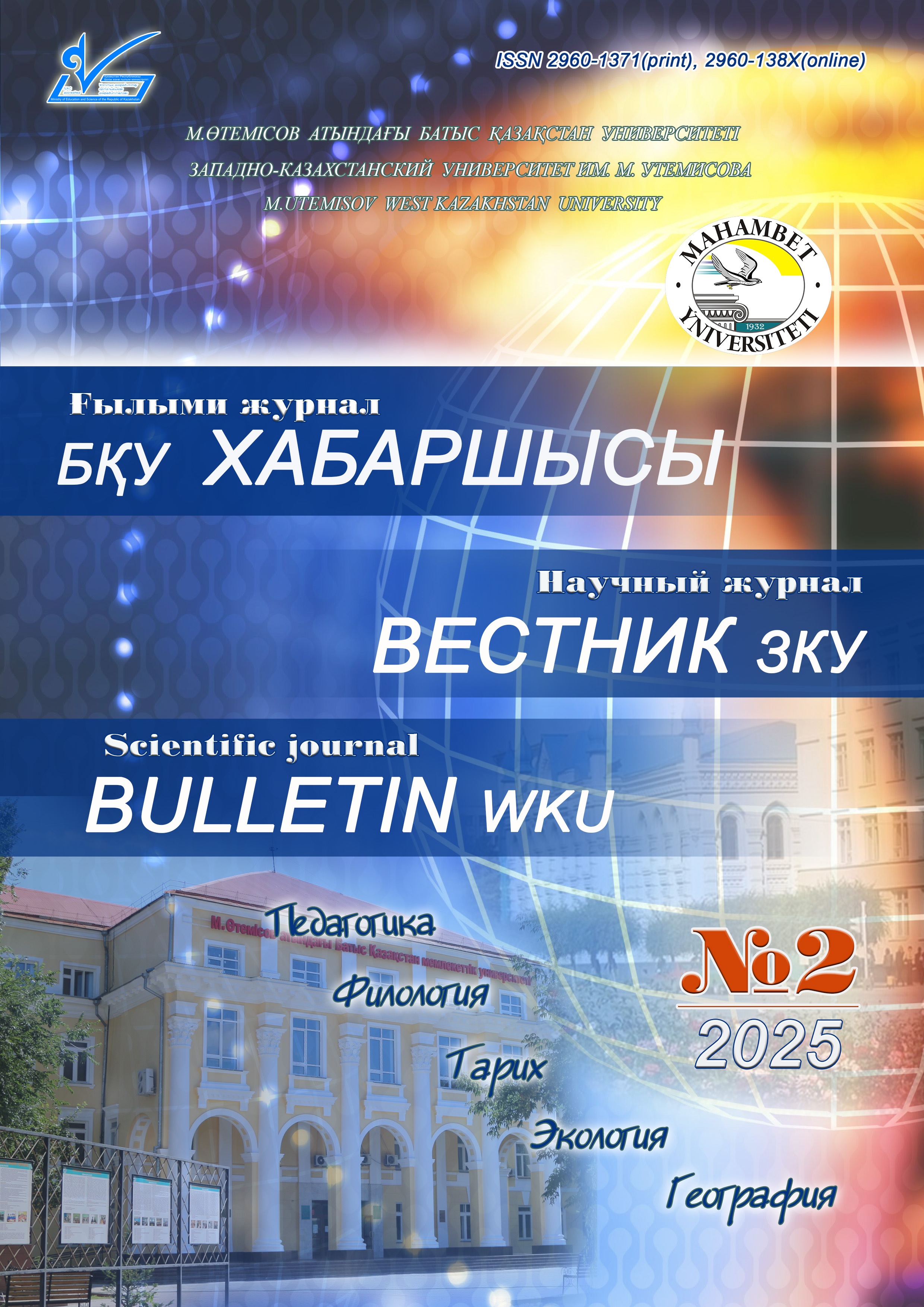KAZAKH-TATAR CULTURAL RELATIONS IN THE CITY OF SEMEY: ENLIGHTENMENT, PRESS, AND ECONOMIC INTEGRATION
Abstract
This article is dedicated to the historical analysis of Kazakh-Tatar cultural, educational, and economic relations in the city of Semey. The study examines the influence of Tatar mullahs on the education system in the Kazakh steppe, the contribution of Tatar merchants to the economic development of Semey, and their roles in trade and industry.
Within the framework of the Russian Empire’s colonial policy, restrictions and control measures imposed on Kazakh-Tatar relations are analyzed based on archival documents. As evidence, the article cites an excerpt from the 1877 report of the Governor-General, expressing concern about the influence of Tatar mullahs on Kazakh enlightenment. These documents reveal the Tsarist administration’s efforts to hinder the involvement of Tatar mullahs in the education of Kazakh children.
Furthermore, the article highlights the formation and development of intellectual connections between Kazakh and Tatar elites, particularly in the fields of culture, enlightenment, and the press. The publication of Kazakh intellectuals’ names in the Shura journal and articles in Tatar periodicals such as Tercüman played a significant role in shaping national consciousness and disseminating enlightenment ideas. The Kazakh press also published materials about the activities of Tatar intellectuals. The continuous exchange of ideas and the establishment of creative collaborations between authors from both communities illustrate the depth of cultural interaction between the Kazakh and Tatar peoples.
In the economic sphere, Tatar merchants significantly contributed to the development of trade and industry in Semey, enhancing the living standards of the local population. The establishment of the Irtysh fleet, flour milling enterprises, and the development of gold mines by Latif Musin were key factors driving the city’s economic growth. Additionally, charitable organizations founded by Kazakh and Tatar intellectuals fostered cooperation in the fields of education and social support.
The research concludes that the mutual resonance between the Kazakh and Tatar peoples—manifested through shared language, religion, and unity—served as the foundation for their close cultural and spiritual ties, particularly as a form of resistance against colonial policies. This study reveals the social, cultural, and economic dimensions of Kazakh-Tatar relations in Semey and underscores the historical significance of their cooperation.



